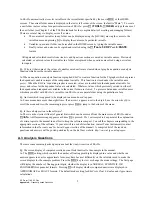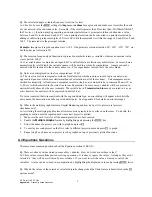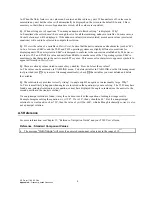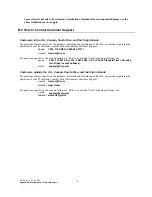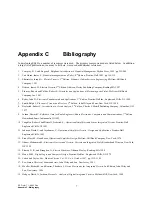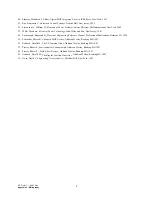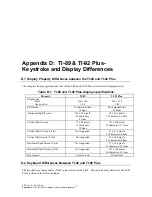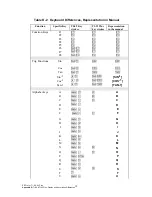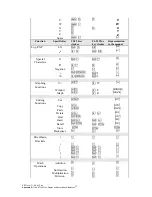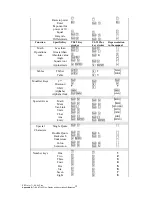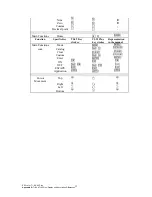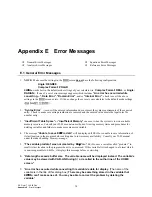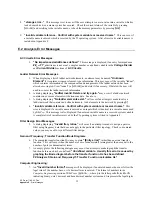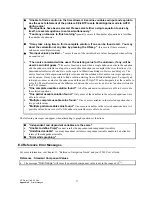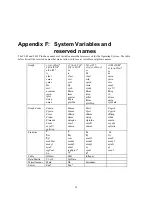
EE Pro for TI-89, 92 Plus
Appendix A - Frequently Asked Questions
4
A. When the Units feature is on, values can be entered and saved in any unit. When units are off, values can be
entered in any unit, but the values will automatically be displayed on the screen in the default SI units. This is
necessary so that when a series of equations are solved, all the values are consistent.
Q. When solving a set of equations “Too many unknowns to finish solving.” is displayed. Why?
A. Sometimes the solver doesn’t have enough to solve for all the remaining, unknown variables. In some cases, a
Partial Solution set will be displayed. If the unknown value(s) is not calculated, more known values (or selected
equations) will need to be selected to compute the solution.
Q. If I view the value of a variable in Pretty Print, I notice that the units contain an extra character (such as ‘
∆
‘).
A. In a few cases EE
•
Pro and the TI-89 and TI-92 operating systems use slightly different conventions for
displaying units. The unit system in EE
•
Pro is designed to conform to the convention established by SI, however,
in order to CUT and PASTE a value and units from EE
•
Pro to another area of the TI operating system, EE
•
Pro
must insert extra characters in the units to match TI’s syntax. This causes extra characters to appear or symbols to
appear differently in Pretty Print.
Q. There are already values stored in some of my variables. How do I clear those values?
A. The values can be accessed via VAR-LINK menu. To delete variables in VAR-LINK, use the file management
tool provided (use
ƒ
key to access file management tools), check
†
the variables you want deleted and delete
the variables.
Q. The solution to my problem is clearly wrong! An angle might be negative or unreasonably large. Why?
A. This is most likely to happen when angles are involved in the equation(s) you are solving. The TI 89 may have
found a non-principal solution to your equation, or may have displayed the angle in radians (see the answer to the
second question in the Analysis section).
If a non-principal solution is found, it may then be used to solve other equations, leading to strange results.
Example: Imagine solving the equation x
y
+ = °
90 . If x is 30°, then y should be 60°. But if a non-principal
solution for x was found, such as 750°, then the value of y will be -660°, which although technically correct, is also
not a principal solution.
A.5 Reference
For more information, see Chapter 33, “Reference: Navigation Guide” and your TI 89 User’s Guide.
Reference : Standard Component Values
•
The message
"Out of range"
will occur if an entered component value is not in the range of 10
±
23
.













